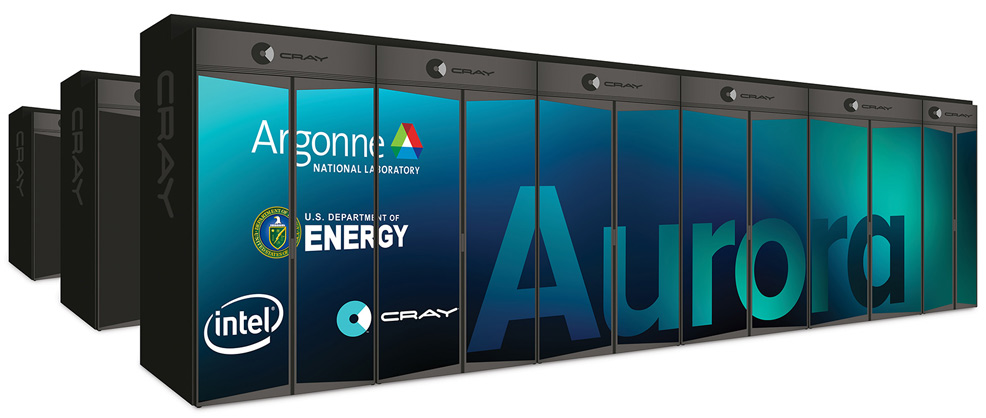
21st March 2019 Exascale supercomputer confirmed for delivery in 2021 The Argonne National Laboratory has revealed plans for "Aurora", the first exascale supercomputer in the United States. This machine will be capable of 1,000,000,000,000,000,000 (a million trillion, or one quintillion) floating point operations per second.
Intel Corporation and the U.S. Department of Energy (DOE) will deliver the first supercomputer with a performance of one exaFLOP in the U.S. The system being developed at DOE's Argonne National Laboratory in Chicago – named "Aurora" – will help to dramatically advance scientific research and discovery. The contract is valued at over $500 million and will be delivered to Argonne National Laboratory by Intel and sub-contractor Cray, Inc. in 2021. Aurora's quintillion floating point computations per second – combined with an ability to handle both traditional high-performance computing (HPC) and new artificial intelligence (AI) – will provide researchers with unprecedented speed, scale and power to address scientific problems. For comparison, the current fastest supercomputer in the country, the IBM "Summit", has a peak performance of 200 petaFLOPS, barely 20% of what Aurora will be capable of. Just some of the breakthrough research projects that Aurora could enable in the 2020s will include larger and more accurate simulations of brain regions, extreme-scale cosmological simulations, faster and more accurate drug response predictions, nanotechnology and other materials for the creation of more efficient organic solar cells. The Aurora system will foster new scientific innovation and usher in new technological capabilities, furthering the United States' scientific leadership position globally.
Aurora will use Cray's next-generation supercomputer system – codenamed "Shasta" – comprising more than 200 cabinets and including Cray's Slingshot high-performance scalable interconnect and the Shasta software stack optimised for Intel architecture. "Achieving exascale is imperative, not only to better the scientific community, but also to better the lives of everyday Americans," said U.S. Secretary of Energy Rick Perry. "Aurora and the next generation of exascale supercomputers will apply HPC and AI technologies to areas such as cancer research, climate modelling and veterans' health treatments. The innovative advancements that will be made with exascale will have an incredibly significant impact on our society." "Today is an important day not only for the team of technologists and scientists who have come together to build our first exascale computer, but also for all of us who are committed to American innovation and manufacturing," said Bob Swan, Intel CEO. "The convergence of AI and high-performance computing is an enormous opportunity to address some of the world's biggest challenges – and an important catalyst for economic opportunity."
Comments »
If you enjoyed this article, please consider sharing it:
|








